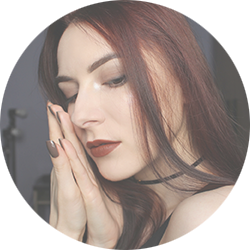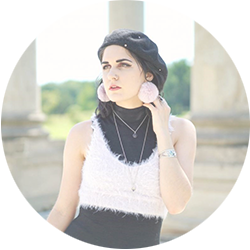







Welcome Back
Sign in to be closer to your community!
Follow other divas, like and comment
on their posts, message them, and see
who loved your posts!
Invalid username or password
You have not verified your account by clicking on the link we sent you via email. Please check your email folders (including your Spam folder) and click on the verify link sent.
Email is required
Password is required








Join FashionPotluck.com
Create your own profile in order to create content, follow other divas and like their posts, use our own messenger, and be a part of a growing international women community!
WELCOME TO OUR COMMUNITY
Fashion Potluck -
the first social media
platform for women.
You are free to read/watch & create content,
express your true self, and interact with others.
Join for free
Already a member? Log in here.
Purchase Alert
Dear Queen, you can only buy from one seller at the time. Please finish this purchase first in order to buy from another FP member
Comments
Please select one platform to continue
Please select one platform to continue
Please select one platform to continue
Please select one platform to continue
Please select one platform to continue
Please select one platform to continue
Please select one platform to continue
Please select one platform to continue
EDITOR APPROVED
You are wondering what is this 'Editor Approved'?
Well, this is pretty awesome! In order for the post to qualify and receive this accolade, it has to have a minimum of 700 words and two images (at least one original).
Receiving this accolade means two things: 1) Your content is amazing! Good job! 2) Your content qualifies for our monetization program. Every week two of the most read posts receive monetary rewards.
Have the badge & want to monetize your content?

FP-BLOG


What is the Kibbe Image Identity System?
The Kibbe Image Identity System is a revolutionary approach to personal style and fashion. It's based on the belief that every person has a unique body type and personality that can be translated into a specific fashion style. By using the Kibbe system, you can identify your body type and personal style, and learn how to choose clothing, accessories, and makeup that flatter your natural beauty and bring out your best features.
Who Created it?
The Kibbe Image Identity System was created by David Kibbe in the 1980s. He believed that traditional fashion advice didn't take into account individual differences in body types and personalities. He developed the system to help people find their true fashion identity and express their personal style with confidence.
Why it works?
This system is all about individuality & body positivity, and its approach to personal style reflects exactly that. It encourages people to celebrate their natural features rather than trying to achieve symmetry or sameness. The goal is to find balance by accepting and emphasizing natural lines instead of following ephemeral trends. This means, that this is a completely democratic system that will work for all body types and personalities.
With the Kibbe Image Identity System, you can say goodbye to cookie-cutter fashion advice and hello to a style that truly reflects your individuality and personality.
Understanding Ying vs. Yang
The concept of Ying and Yang is a fundamental aspect of the Kibbe Image Identity System. It represents the balance between two opposing forces that are complementary and interdependent. The idea is that one cannot exist without the other, and both must work together in harmony. In the Kibbe system, Ying represents the softer, more fluid, and more intuitive aspects of an individual, while Yang represents the stronger, more structured, and more logical aspects. Understanding the balance between these two forces is essential in determining one's unique Image Identity. It helps individuals identify the most flattering clothing styles, accessories, and hairstyles that align with their natural tendencies and balance their Ying and Yang energies. By embracing their true nature, individuals can achieve a harmonious, authentic, and confident personal style that expresses their individuality and radiates their inner beauty.
Five Family Types
The Kibbe Image Identity System is divided into 13 different types that belong to five families. These pure types are split along the yin/yang spectrum, with Dramatic and Natural on the more yang side and Gamine and Romantic on the yin side. The Classic type falls right in the middle, with a balanced yin/yang ratio. It's important to note that Kibbe, the creator of this classification system, differentiates between a body's bone structure, body flesh, and facial features. All three sections of your body can have a different yin/yang balance, but what makes the pure types pure is that all three areas have the same yin/yang balance. By understanding your pure type family, you can better understand the mixed types and dress to flatter your unique shape.
Dramatic
This family is characterized by dominant yang energy, with no yin influence. As a result, those with a Dramatic body type exhibit a strikingly elongated appearance with sharp edges.
Their Bone Structure is defined by a towering height, narrow frame, and elongated limbs. The shoulders are slender and sharply contoured, while the arms and legs are long and lean. The hands and feet are notably large and narrow.
Their Body Flesh appears taut and lean, with a flat bust line, straight waistline, and straight hips. Their physique is defined by its sculpted lines and sharp angles.
Facial Features of this family are striking and angular, with prominent cheekbones, a chiseled jawline, and a sharply defined nose. They typically have small, close-set eyes, straight, thin lips, and taut cheek flesh.
Overall, the Dramatic body type is marked by its commanding and elegant appearance, defined by sharp, chiseled lines and a dominant yang energy.
Natural
This family exhibits a predominantly yang-dominant trait with a subtle softness of yin. While they retain their angular appearance, their edges are less sharp and more rounded.
Their bone structure is tall and broad, featuring broad shoulders with blunter edges, long arms and legs, as well as large and wide hands and feet.
In terms of body flesh, they have a wide and somewhat flat bust line, a straight and broad waistline, and a similarly straight hip. The flesh on their bodies is taut and muscular.
Their facial features are characterized by angularity and width, with blunt edges on the nose, cheekbones, and jawline. They have wide-spaced eyes, straight and broad lips, and muscular cheek flesh.
Classic
The Classic family embodies a harmonious blend of yin and yang, resulting in a balanced and symmetrical appearance with moderate features.
Their bone structure is characterized by a moderate height, with shoulders that are neither fully straight nor sloped, and similarly moderate arms and legs. Their hands and feet are proportionate and in harmony with the rest of their body.
In terms of body flesh, they have an even distribution of weight throughout their body, resulting in a well-proportioned bust line, waistline, and hips, with a slightly smaller waist. Their body is not excessively taut or curvy but rather balanced and proportional.
Their facial features are very symmetrical and proportionate, with a moderate nose, cheekbones, and jawline. They have moderate-sized eyes, lips, and cheek flesh, all in proportion to each other.
Gamine
The Gamine family is a unique blend of yin and yang, with distinct features that are either petite yin or sharp yang. Unlike the Classic family, Gamines do not have blended features.
Their bone structure appears petite but with angular and straight bones. Their shoulders are sloped and tapered, and they have long arms and legs. Their hands and feet are delicate and small.
In terms of body flesh, they have a straight bust line, waistline, and hips, with lean flesh on their bodies.
Their facial features are characterized by angularity, with an angular nose, cheekbones, and jawline. They have large eyes, moderate to thin lips, and taut cheek flesh.
Romantic
The Romantic family embodies a lush yin without any yang influence, placing them on the far right end of the Yin/Yang spectrum. They have a soft and round appearance.
Their bone structure is delicate, and they may appear shorter than they are. Their shoulders are sloped with round edges, and they have short arms and legs. Their hands and feet are small and delicate, adding to their overall softness.
In terms of body flesh, they have a full bust line, a full hourglass figure, and curvy, rounded hips. The flesh on their bodies is very soft, voluptuous, and fleshy, even when at their ideal weight.
Their facial features are small and delicate, with round edges. They have large, rounded eyes, full lips, and round cheekbones, further adding to their overall soft and romantic appearance.
13 Body Types
The majority of people fall into one of the eight mixed body types, which are a combination of the pure types. Pure types, on the other hand, are quite rare.
Discover all 13 types of the Kibbe Image Identity System by exploring the column below.

Comments
Related Posts
- The Evolution of Women's Fashion: Key Historical Eras and Styles by Chloe Williamson 0
- 9 Things No One Tells You About Invisalign, But You’ll Wish You Knew Sooner by Monica Quinn 0
- Keep Diabetes in Check: 6 Fiber Superfoods You Should Eat by Monica Quinn 0
More Posts
- Why Cowboy Ties Are Making a Bold Fashion Comeback This Year by Rocky Mountain Western 0
- Havva Fashion – Trendy Women’s Wear for Every Occasion by 0
- Abiti da Sposa 2026: Eleganza Moderna, Tradizione Italiana e Tendenze da Non Perdere by Angelo Sonnino 0
Vote content out
Reason for voting this content out?
Reason for voting this content out?


 Login with Google
Login with Google Login with Twitter
Login with Twitter







 by
by 




Add Comments